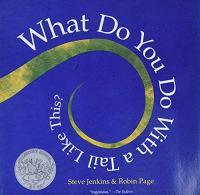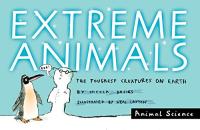Key Information
Focus
When To Use This Strategy
Appropriate Group Size
Why use semantic feature analysis?
- It illustrates how words are both similar and different and emphasizes the uniqueness of each word.
- It draws on students’ prior knowledge and uses discussion to elicit information about word meanings.
How to use semantic feature analysis
- Select a category or topic for the semantic feature analysis.
- Provide students with key vocabulary words and important features related to the topic.
- Vocabulary words should be listed down the left hand column and the features of the topic across the top row of the chart.
- Have students place a “+” sign in the matrix when a vocabulary word aligns with a particular feature of the topic. If the word does not align students may put a “–” in the grid. If students are unable to determine a relationship they may leave it blank.
Download blank template
Collect resources
Language Arts
Use a semantic feature analysis to compare genres of books across story characteristics. See example ›
Math
Use a semantic feature analysis to chart information about whole numbers. See example ›
Use a semantic feature analysis to chart information about polygons. See example ›
Science
Use a semantic feature analysis to teach students about the types of dinosaurs and their characteristics. See example ›
Social Studies
Use a semantic feature analysis example to help students compare different U.S. Presidents. See example ›
Differentiated instruction
For second language learners, students of varying reading skill, students with learning disabilities, and younger learners
- Adjust the number of categories depending on the learner. Use concrete words and features for learners who have difficulty with abstract thoughts.
- Begin with items that are fairly dissimilar and move toward using items where the differences are more subtle.
- Follow up assignments can vary from using the information learned about one category to assignments that ask students to compare and contrast across categories.
- Be deeply aware of cognitive and cultural diversity as you work through the features. Some games which are considered to be “one player” games might be played as a team game in certain cultures or even families. A similar situation exists as to whether a game is a “kid’s game” or not. Be careful to understand the student’s thought process as you evaluate their answers as “wrong” or “right.”
See the research that supports this strategy
Anders, P. L., &Bos, C. S. (1986). Semantic feature analysis: An interactive strategy for vocabulary development text comprehension. Journal of Reading, 29, 610-617.
Billmeyer, Rachel. (2003). Strategies to Engage the Mind of the Learner: Building Strategic Learners. Dayspring Printing: Omaha, NE: Dayspring Printing.
Johnson, D. D. &Pearson, P. D. (1984). Teaching reading vocabulary. New York: Holt, Rinehart and Winston.
Richardson, Judy S., and Raymond F. Morgan. (1999). Reading to Learn in the Content Areas. Belmont, CA: Wadsworth Publishing Company.
Texas Education Agency. (2002). Teaching Word Meanings as Concepts .
Children’s books to use with this strategy

What Do You Do with a Tail Like This?

